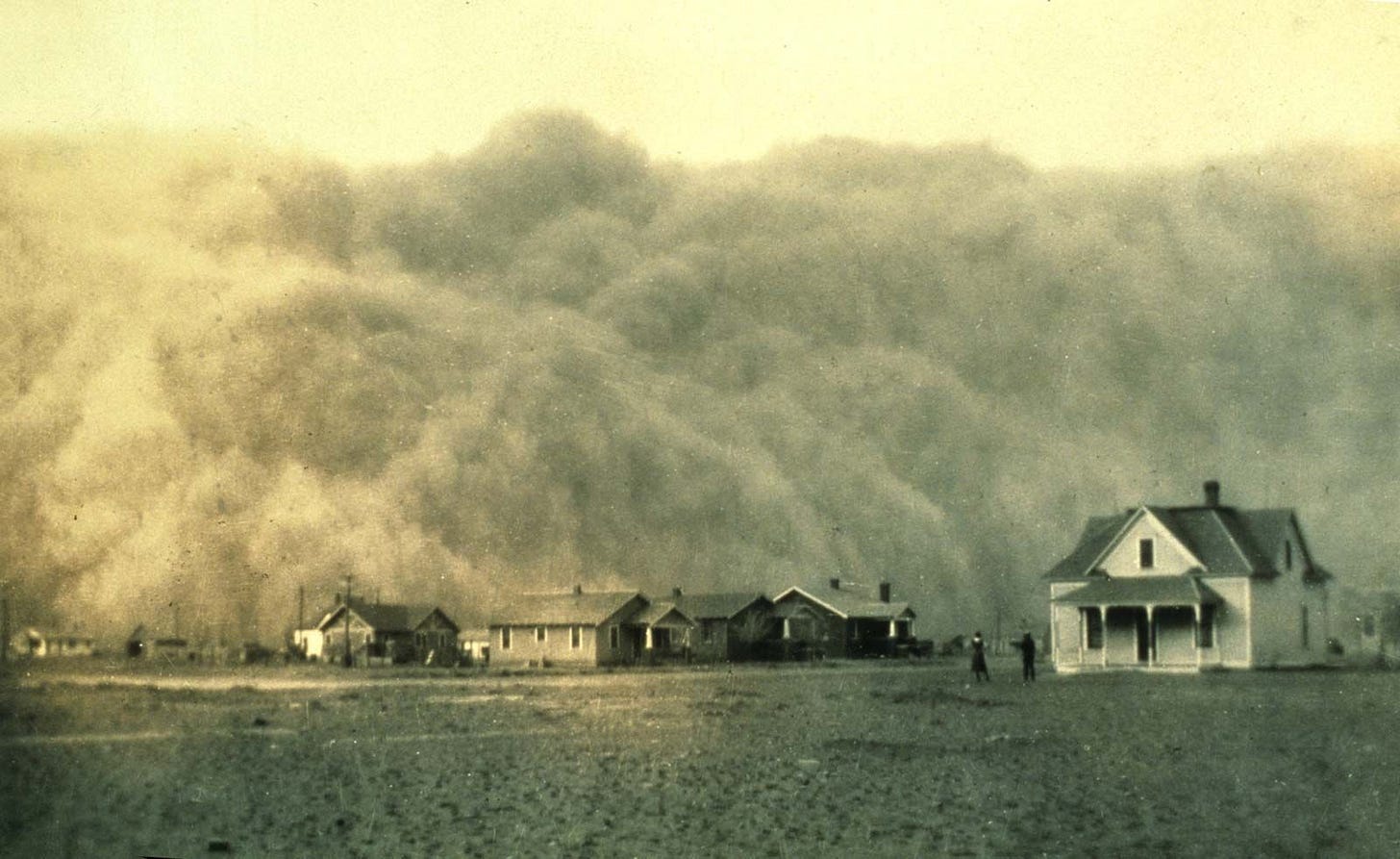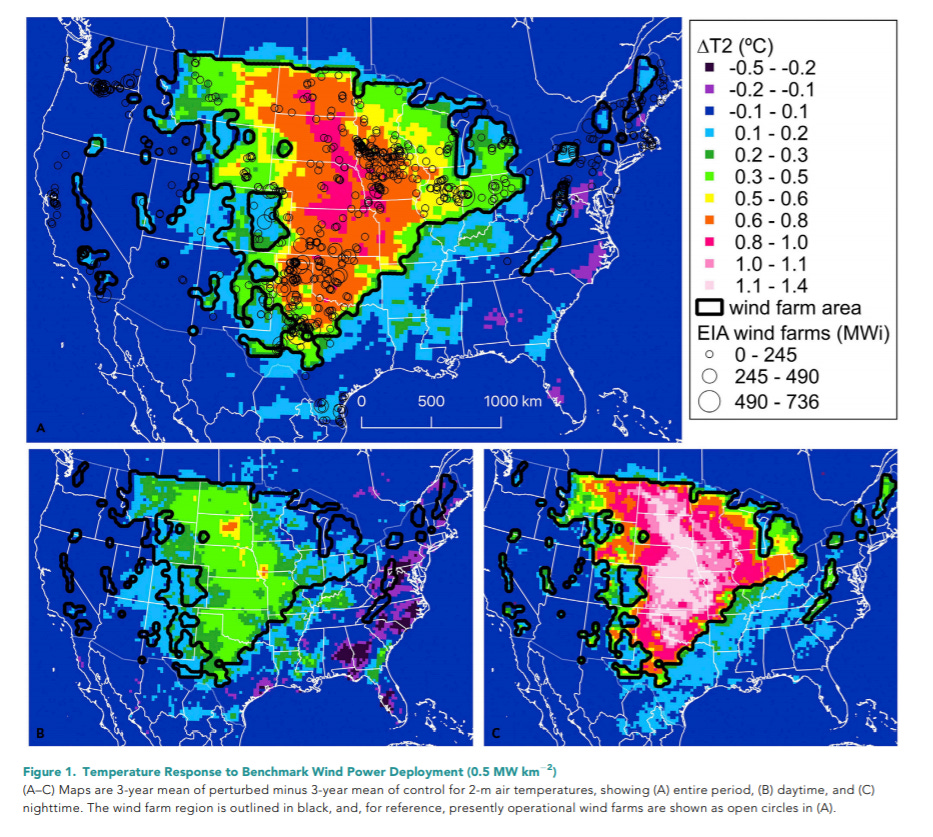www.britannica.com
The Dust Bowl of the 1930s stands as a stark reminder of the devastating impact that environmental degradation can have on both ecology and agriculture. This period was characterized by severe dust storms that ravaged the American and Canadian prairies, fueled by a lethal combination of natural and human-induced factors.
At the heart of this environmental catastrophe lay a prolonged period of drought, which struck in three waves between 1934 and 1940. This severe lack of rainfall, coupled with unsustainable farming practices, set the stage for disaster. The settlers in the region, largely unfamiliar with the arid conditions of the High Plains, failed to implement proper dryland farming methods to prevent wind erosion. As a result, the natural topsoil, crucial for maintaining soil structure and fertility, was tragically destroyed.
The consequences were profound and far-reaching. In many areas, more than 75% of the precious topsoil was lost to the relentless winds by the end of the 1930s. This widespread land degradation had both immediate and long-term economic ramifications. By 1940, counties hit hardest by erosion experienced a significant decline in agricultural land values. The per-acre value of farmland plummeted by 28% in heavily eroded counties and 17% in moderately affected ones, compared to more resilient areas.
Moreover, the economic fallout persisted for years to come. Despite efforts to recover, the agricultural value of the land often failed to return to pre-Dust Bowl levels, with less than a quarter of the original losses regained in highly eroded regions. The economy of these areas underwent substantial shifts, marked by significant population declines throughout the 1930s and well into the 1950s.
One of the contributing factors to the prolonged economic hardship was the reluctance or inability of farmers to adapt their practices to the new reality. Despite the diminished productivity of the soil, many persisted in growing crops like wheat, rather than transitioning to more suitable alternatives such as animal husbandry or hay production. This resistance to change was fueled in part by ignorance of the benefits of shifting land use and compounded by a lack of access to credit, exacerbated by the widespread failure of banks in the Plains states during the Dust Bowl era.
In essence, the Dust Bowl serves as a cautionary tale about the delicate balance between human activity and the natural environment. It underscores the urgent need for sustainable land management practices and highlights the profound economic consequences of environmental degradation when left unchecked.
Image provided by www.fao.org
Black Gold
Chernozem, also known as black soil or black cotton soil, owes its name to the Russian words for "black" and "soil". This exceptionally fertile soil type boasts a high humus content, ranging from 4% to 16%, along with significant levels of phosphorus and ammonia compounds. Recognized for its remarkable fertility and superior moisture-retaining capacity, chernozem is prized for its ability to yield abundant agricultural harvests.
Discovered by Russian geologist Vasily Dokuchaev in 1883 within the expansive tallgrass steppe of Eastern Ukraine and Western Russia, chernozem covers approximately 230 million hectares of land globally. It is classified into two primary belts: the Eurasian steppe, stretching from eastern Croatia to Siberia, and the North American belt, spanning from the Canadian Prairies to Kansas in the United States.
Chernozem layer thickness varies significantly, ranging from several centimeters to an impressive 1.5 meters (60 inches) in regions such as Ukraine and the Red River Valley in North America. While prevalent in these regions, chernozem also exists in smaller quantities across Poland, Hungary, Texas, Northeast China (near Harbin), and even in Australia around Nimmitabel, where it constitutes some of the continent's most fertile soils.
Despite representing a minority of the world's soils, black soils play a crucial role in global agriculture, supporting local populations and contributing significantly to international food exports. These soils are responsible for approximately two-thirds of the world's sunflower seeds, 30% of its wheat, and 26% of its potatoes. Distinguished by their rich organic matter, abundant carbon content, and essential nutrients like nitrogen, phosphorus, and potassium, black soils cover an estimated 725 million hectares worldwide. Notably, nearly half of this area lies within the Russian Federation, where chernozem comprises 19% of the land area. Other countries with extensive chernozem areas include Argentina, China, Colombia, Hungary, Indonesia, Kazakhstan, Poland, Ukraine, and the United States of America.
The solar industry is expanding its presence in the U.S. Midwest, attracted by lower land rents, access to electric transmission, and a plethora of federal and state incentives. This region offers ideal conditions for solar energy production, with its vast expanse of open fields.
However, the surge in renewable energy development raises concerns about the potential damage to some of America's richest soils in key farming states. Landowners are drawn to the promise of profits. Solar leases in Indiana and surrounding states can offer substantial returns, ranging from $900 to $1,500 per acre per year in land rents, with annual rate increases. In comparison, farmland rent in top corn and soybean-producing states like Indiana, Illinois, and Iowa averaged about $251 per acre in 2023, according to USDA data.
Farmland Partners Inc, a publicly traded farmland real estate investment trust (REIT) has leased about 9,000 acres nationwide to solar firms. Much of that ground is highly productive, said Executive Chairman Paul Pittman.
"Do I think it's the best use of that land? Probably not. But our investors would kill us if we didn't pursue this," he said.
PRIME CROPLAND
Advocates argue that solar energy is crucial for powering future electric vehicles, especially in the Midwest, where over one-third of the U.S. corn crop is dedicated to ethanol production.
However, some agricultural economists and agronomists raise concerns about the impact of converting even small portions of prime cropland for solar development. They argue that this practice, coupled with the disruption of valuable topsoil, could significantly diminish future crop potential in the United States.
The construction of solar farms often involves clearing and grading large sections of land, which can lead to substantial erosion and sediment runoff into waterways if not properly managed. According to the U.S. Environmental Protection Agency and the Justice Department, these common practices pose environmental risks that require careful remediation.
The expansion of solar development coincides with a growing competition for land. USDA data from 2023 reveals a concerning trend: there are nearly 8% fewer acres in farms compared to 1997, as farmland is increasingly converted for residential, commercial, and industrial purposes.
In response to these findings, the USDA acknowledges the importance of addressing farmland loss but emphasizes that urban sprawl and development are currently larger contributors than solar development. Citing reports from the Department of Energy and agency-funded research, the USDA underscores the need for balanced land use policies to mitigate the impacts of land conversion on agricultural viability and sustainability.
The extent of cropland nationwide currently under solar panels or leased for potential future development remains uncertain, as land deals are often private transactions.
Renewable energy projects frequently compete with prime agricultural land, raising concerns about the potential loss of fertile soils and agricultural viability as utility-scale solar and wind farms require at least ten times as much space per unit of power as coal- or natural gas–fired power plants. Wind turbines are often placed half a mile apart, while large solar farms span thousands of acres.
Meeting decarbonization targets set by the Biden Administration will require significant expansion of solar energy capacity. According to the Energy Department's Solar Futures Study, published in 2021, ground-based solar development is expected to occupy up to 5% of each state's land area by 2050, except for Rhode Island, where it could reach 6.5%.
Bloomberg
The American Farmland Trust warns that without changes to current policies, the majority of new solar energy development in the U.S. will occur on farm and ranchland, with nearly half on the nation's most productive agricultural land.
Less Emissions more heat
In a 2018 study published in the academic journal Joule, researchers from Harvard shed light on a surprising phenomenon: wind turbines can actually contribute to local increases in surface temperatures in the areas where they are situated. This discovery holds significant implications, particularly for regions like Minnesota, where the impact is most pronounced.
According to the study, wind turbines, particularly those towering between 100 and 150 meters (328 to 498 feet), have the capacity to pull down warmer air from as high as 1,640 feet in the atmosphere down to the surface of the earth. This mixing of air leads to a warming effect on the surface, affecting the immediate surroundings including humans, plants, and animals.
Examining the scenario where the United States heavily relies on wind turbines for its energy needs, the study predicts a temperature increase of approximately 0.54 degrees Celsius (0.97 degrees Fahrenheit) in the regions hosting wind turbines. Notably, some areas, such as Southwestern Minnesota, could experience even greater temperature rises, ranging from 0.6 to 0.8 degrees Celsius, while Northeastern Minnesota might see increases of 0.3 to 0.5 degrees Celsius.
The majority of this warming is expected to occur during nighttime, with the wind farm regions experiencing about twice the warming effect compared to daytime conditions. The study highlights that the warming tends to be more pronounced closer to the center of the wind farm region.
Photovoltaic (PV) solar panels, recreate heat island effect, akin to the Urban Heat Island effect observed in cities. The transition to PV plants alters the way incoming energy interacts with the environment, affecting factors such as albedo, vegetation, and terrain structure, which can impact temperature dynamics general 3–4 °C.
These localized heat phenome increases the evaporation of moister drying out the soil creating drought like condition not suitable for agricultural.
In conclusion
The rapid shift towards renewables in the United States will undoubtedly have profound implications for the regional and local environments of its breadbasket region, necessitating difficult decisions between climate ambitions and maintaining its position as an agricultural superpower. In 2023 alone, the value of U.S. agricultural exports reached $178.7 billion, with a significant portion destined for Asian markets. Recent events, such as the Russian-Ukrainian war, offer a stark reminder of the consequences when a major food exporter experiences disruptions in production. Ukraine, a key grain exporter, has witnessed a significant decline in its exports, triggering widespread food security concerns for millions worldwide.









Thanks for reading
Very interesting read! Thank you!